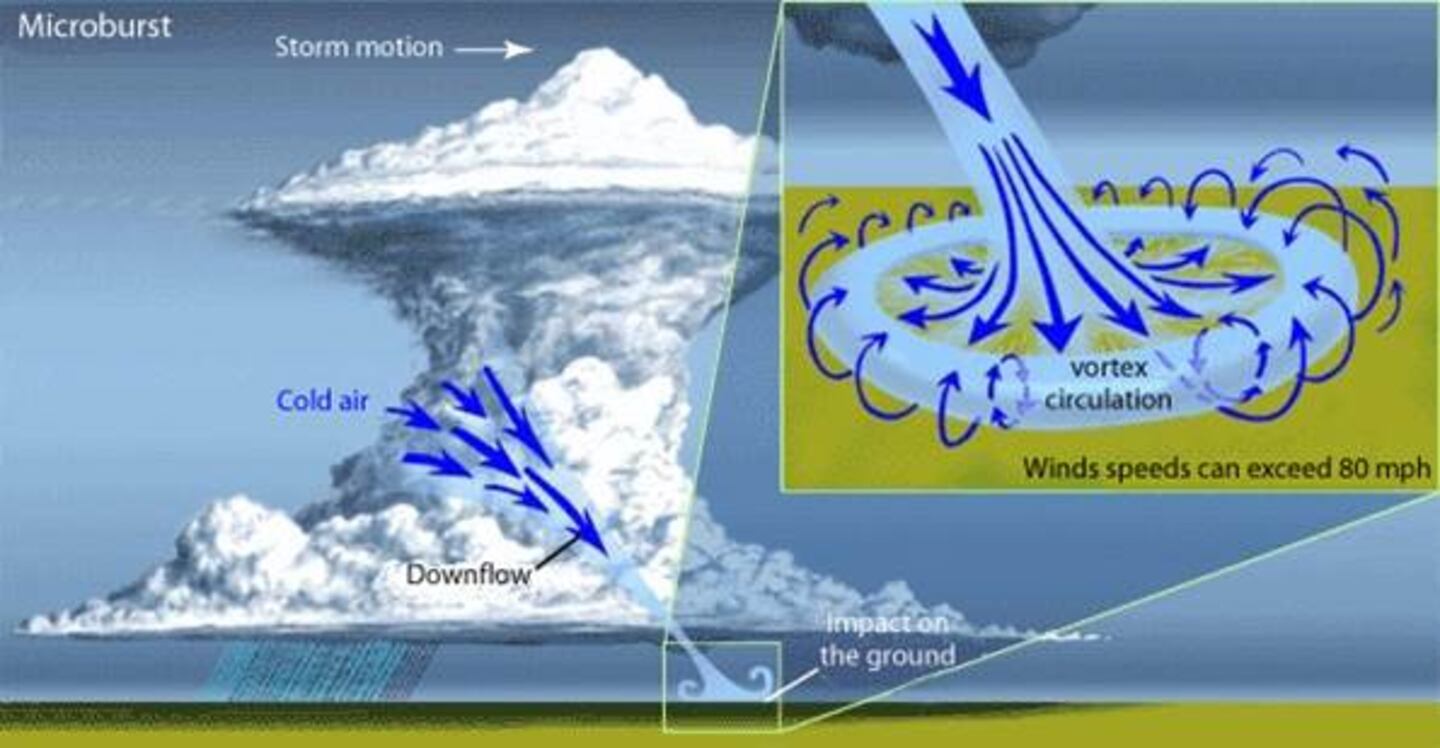Thunderstorms are common in the Southeast, including North Georgia and Metro Atlanta.
In fact, thunderstorms occur worldwide, with as many as 2,000 thunderstorms in progress at any given time throughout the world, according to the National Severe Storms Laboratory. In the US, as many as 100,000 thunderstorms occur each year, with only about 10 percent of these storms reaching severe levels.
Severe storm criteria
Some thunderstorms can be rather intense, with frequent lightning and heavy rainfall. A “bad storm” can be rather intense to drive through, and the thunder can be rather loud, but a thunderstorm is considered “severe” if it produces any of the following:
- Wind gusts 58 mph or greater (Why 58 mph? Because the traditional wind speed unit is knots, and 50 knots converts to 58 mph.)
- Hail that is 1 inch in diameter or greater (the size of a U.S. quarter)
- Tornado(es)
What are the main impacts from severe thunderstorms?
Lightning: While lightning is not a criterion for classifying a storm as severe, a “lightning jump” or large increase of lightning strikes in a short amount of time can signify a rapidly strengthening thunderstorm. These thunderstorms contain strong updrafts, or upward moving winds, that push water droplets and ice crystals higher in the atmosphere. Along the way, friction between the rain drops and ice crystals produce different static charges in the cloud, and lightning discharges the static electrical build up within the storm cloud. The more lightning strikes within a storm, the stronger the updrafts and more than likely the stronger the winds associated with the storm.
Wind Damage: High winds are the main impacts from severe thunderstorms. Wind gusts as high as 58 mph or greater have the potential to knock down and uproot trees, down power lines, and cause structural damage to homes and buildings.
Often, in the late spring and summer, damaging winds within a thunderstorm are due to downbursts, which are rapidly-moving downward columns of rain-cooled air.
Downbursts are responsible for straight-line wind damage, which can level large swaths of trees and powerlines. Straight-line wind damage is similar to tornado damage, with the exception that straight-line winds “fan out” in a straight line, as opposed to swirling around a central vortex, as is the case with tornadoes.
Downbursts that are 2.5 miles in diameter or smaller are considered microbursts. Downbursts that are 2.5 miles or greater in diameter are macrobursts.
Share Your Storm Damage Reports With Me!
Facebook: Christina Edwards WSB
Twitter: @ChristinaWSBwx
©2022 Cox Media Group












